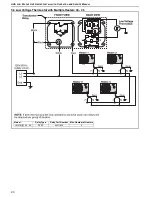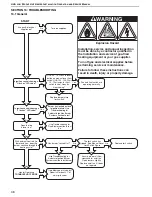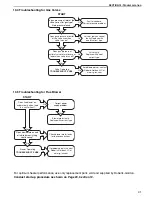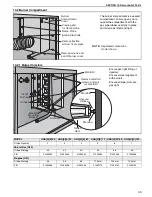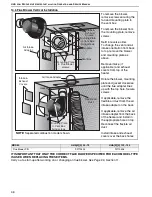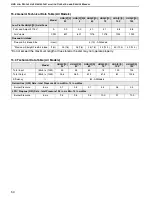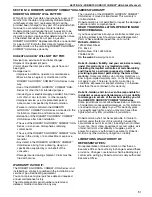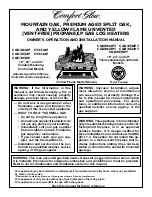
UHA L
OW
P
ROFILE
U
NIT
H
EATER
I
NSTALLATION
O
PERATION
AND
S
ERVICE
M
ANUAL
36
12.7 Venting and Air Intake Pipe
Inspect all venting and air intake pipe. Ensure that
all seams are sealed and suspension points secure.
Repair suspension points if any part of the venting
or combustion air pipe is sagging. Check to make
sure any insulation is not missing or in poor
condition. Replace as required. Check all venting
and air intake components to ensure they are in
good condition, gas tight and corrosion-free.
12.8 Maintenance Checklist
Installation Code and Annual Inspections:
All
installations and service of ROBERTS GORDON
®
equipment must be performed by a contractor
qualified in the installation and service equipment
sold and supplied by Roberts-Gordon and conform
to all requirements set forth in the ROBERTS
GORDON
®
manuals and all applicable
governmental authorities pertaining to the
installation, service and operation of the equipment.
To help facilitate optimum performance and safety,
Roberts-Gordon recommends that a qualified
contractor annually inspect your ROBERTS
GORDON
®
equipment and perform service where
necessary, using only replacement parts sold and
supplied by Roberts-Gordon.
WARNING
Explosion Hazard
Installation, service and annual inspection
must be done by a contractor
q
ualified in
the installation and service of
g
as-fired
heatin
g
e
q
uipment or your
g
as supplier.
Turn off
g
as and electrical supplies before
performin
g
service or maintenance.
Failure to follow these instructions can
result in death, injury or property dama
g
e.
The Vicinity of the Heater
Do not store or use flammable objects, liquids or vapors near the heater.
Immediately remove these items if they are present.
See Page 6, Section 3
.
Vehicles and Other
Objects
Maintain the clearances to combustibles.
Do not hang anything from, or place anything on, the heater.
Make sure nothing is lodged in between the heat exchanger or in the louvers.
Immediately remove objects in violation of the clearances to combustibles.
See Page 6, Section 3
.
Vent Pipe/Terminals
Venting must be intact. Using a flashlight, look for obstructions, cracks on the
pipe, gaps in the sealed areas or corrosion.
The area must be free of dirt and dust.
Remove any carbon deposits or scale using a wire brush.
If the vent terminal has a screen built in, remove any dirt, dust or deposits
from the screen.
See Page 21, Section 7
.



